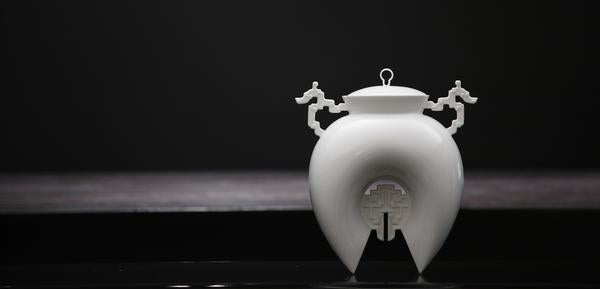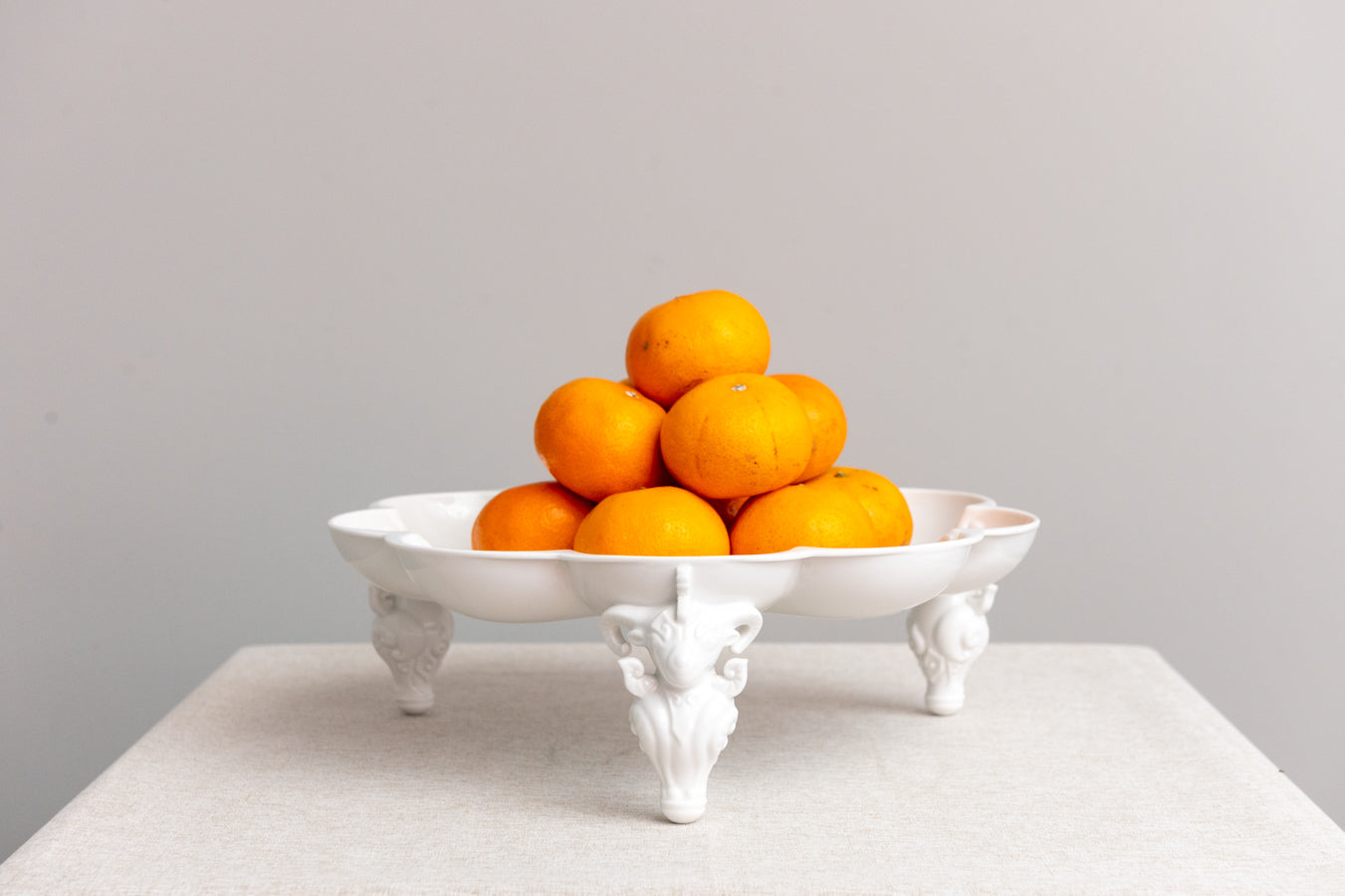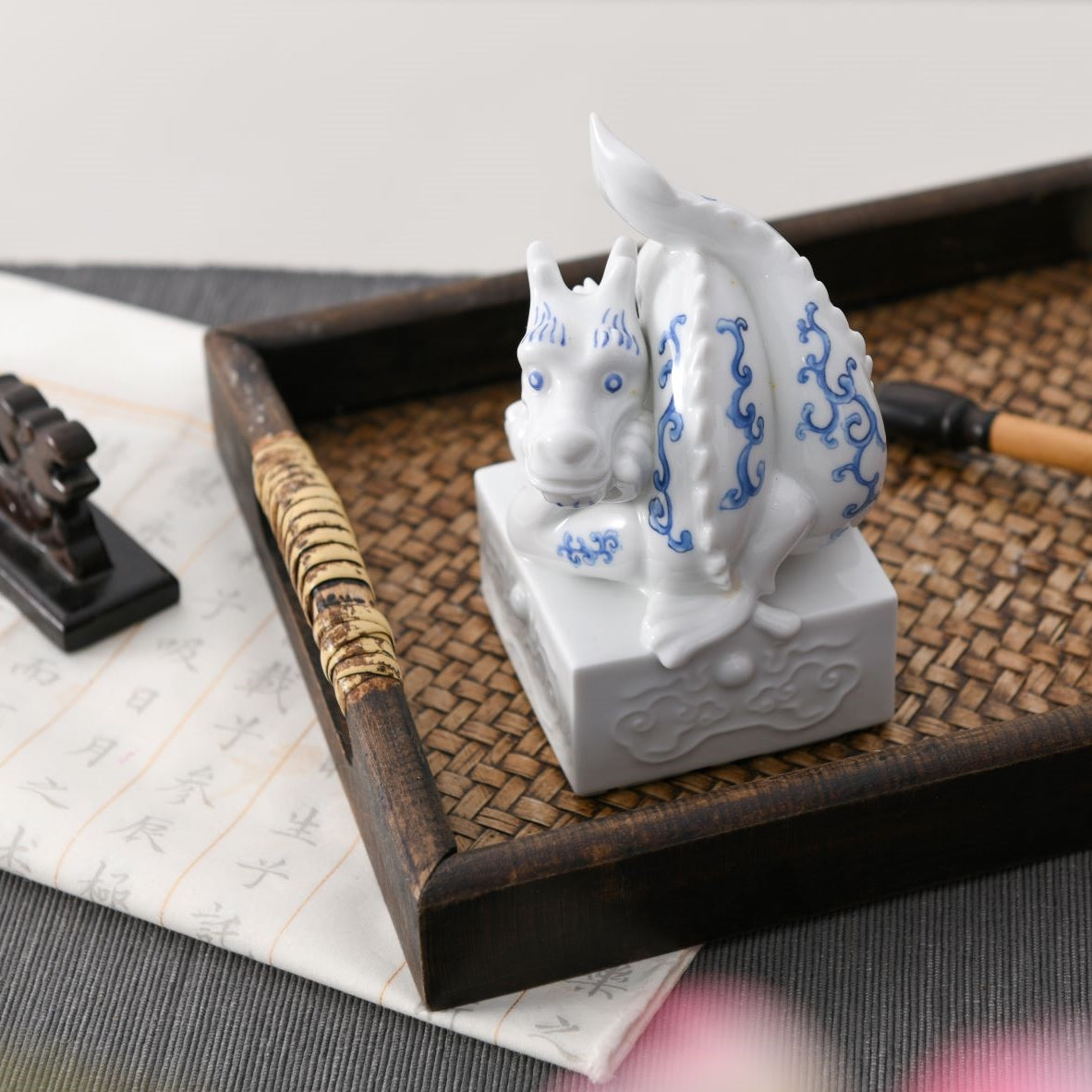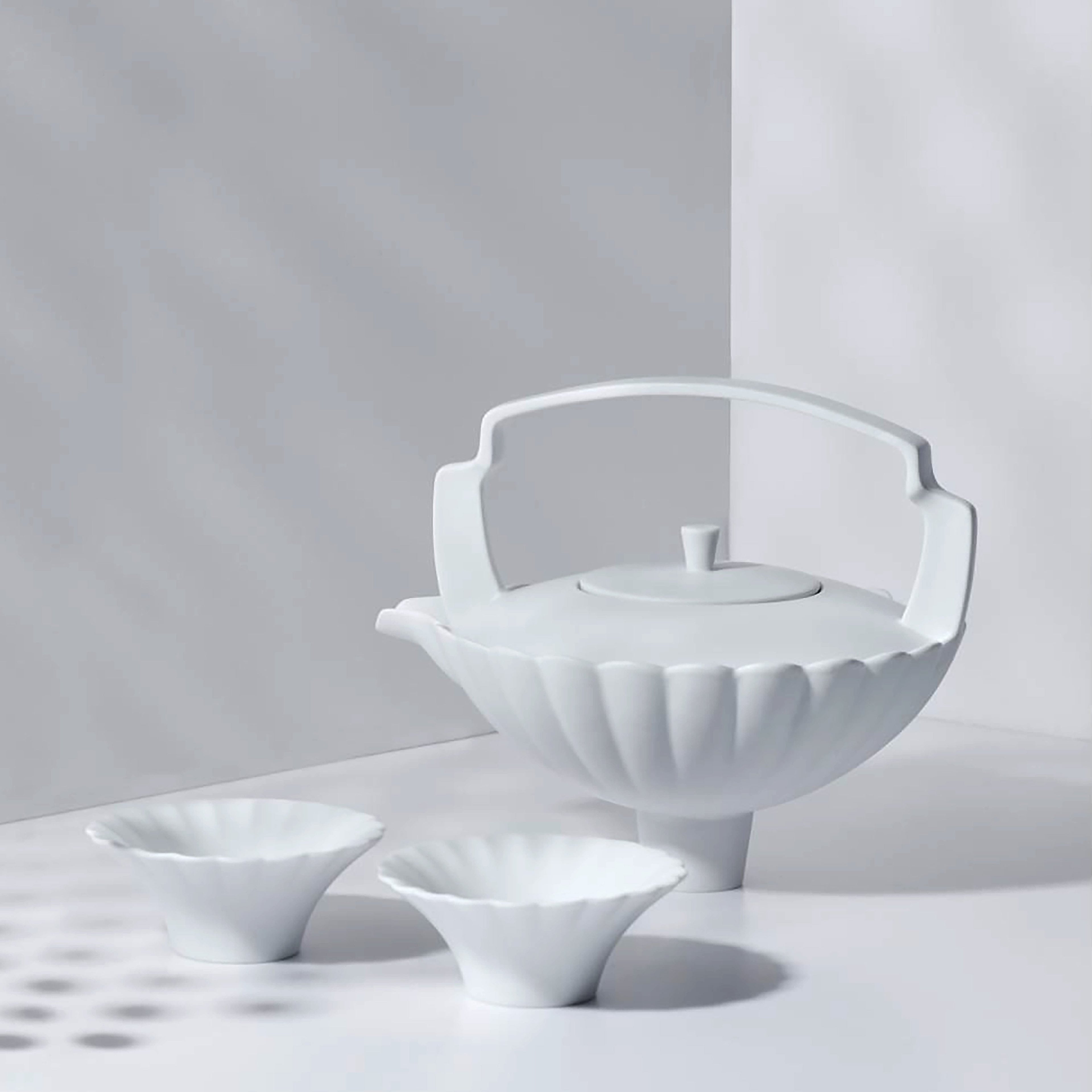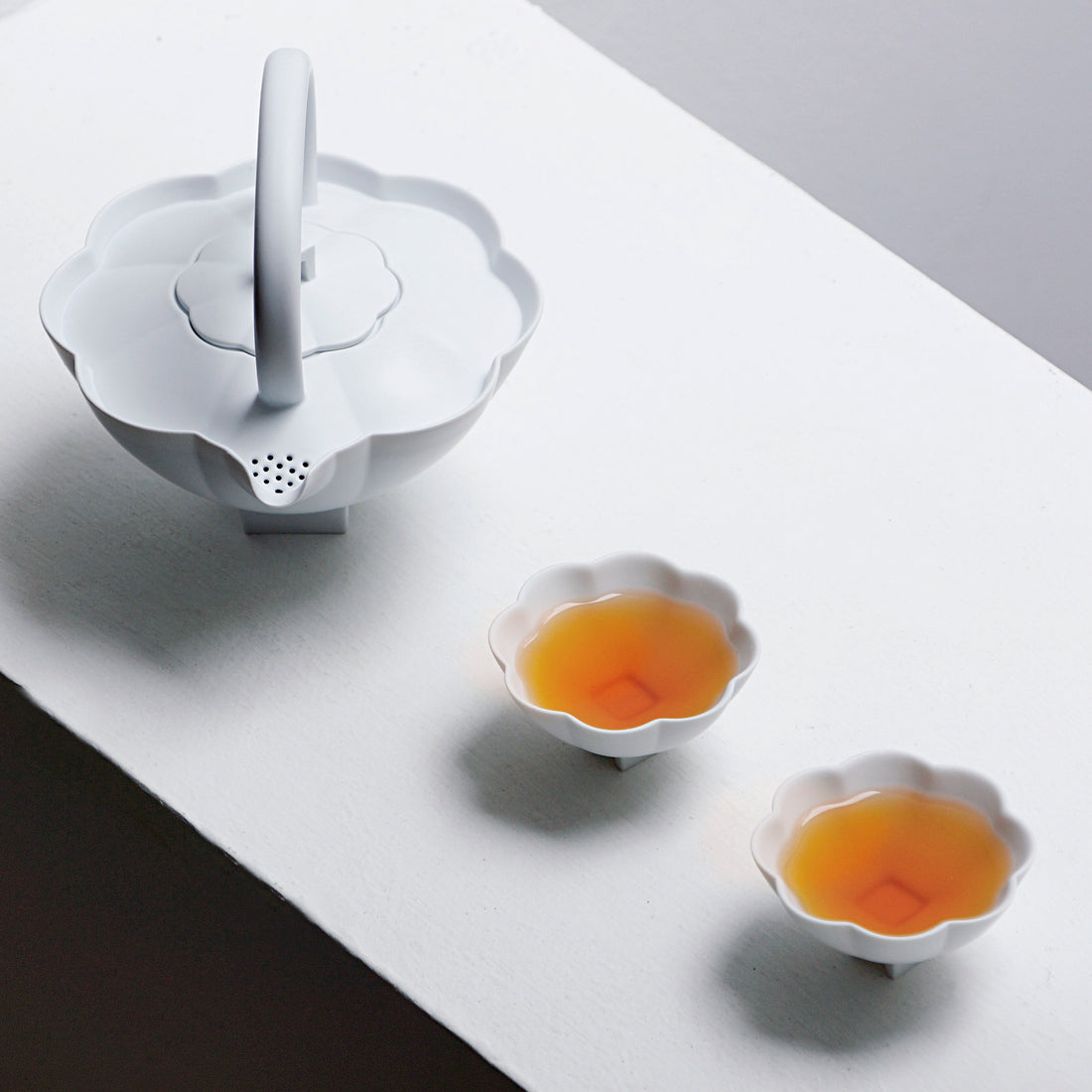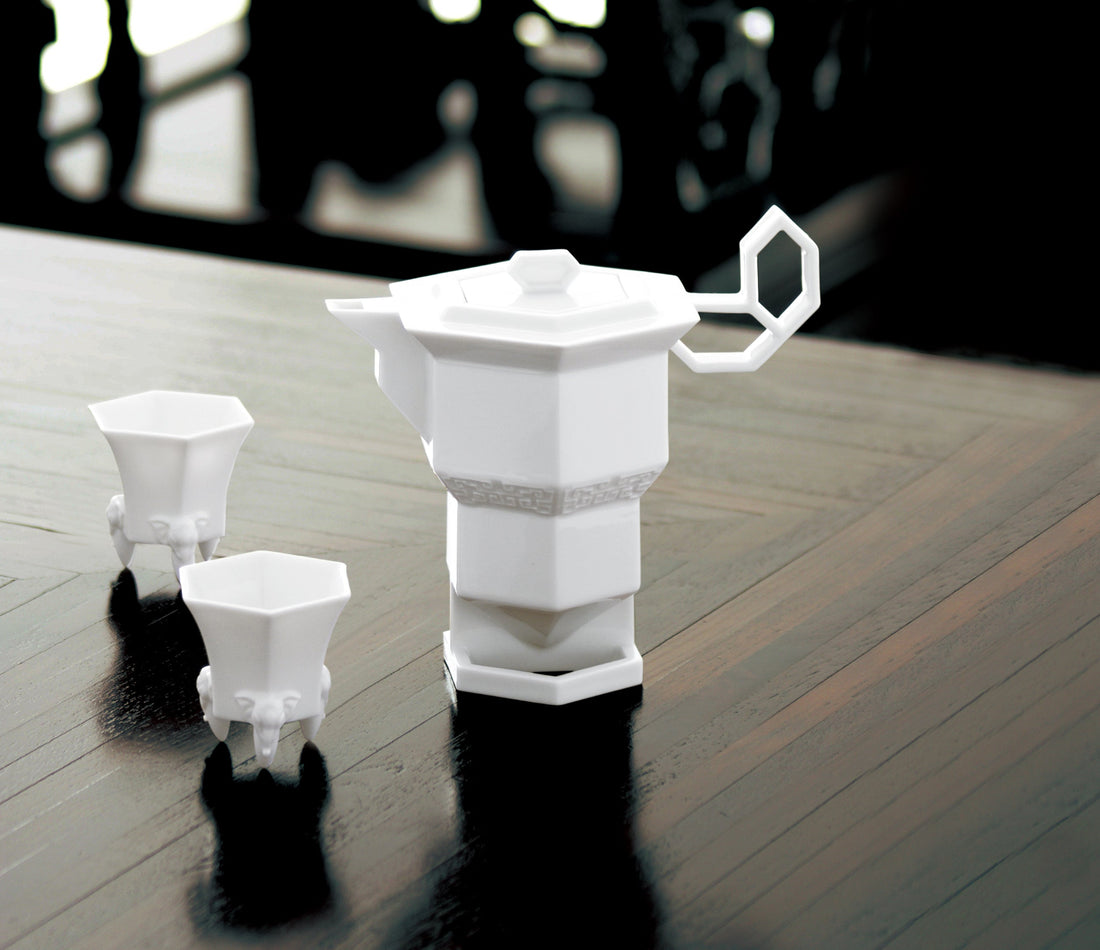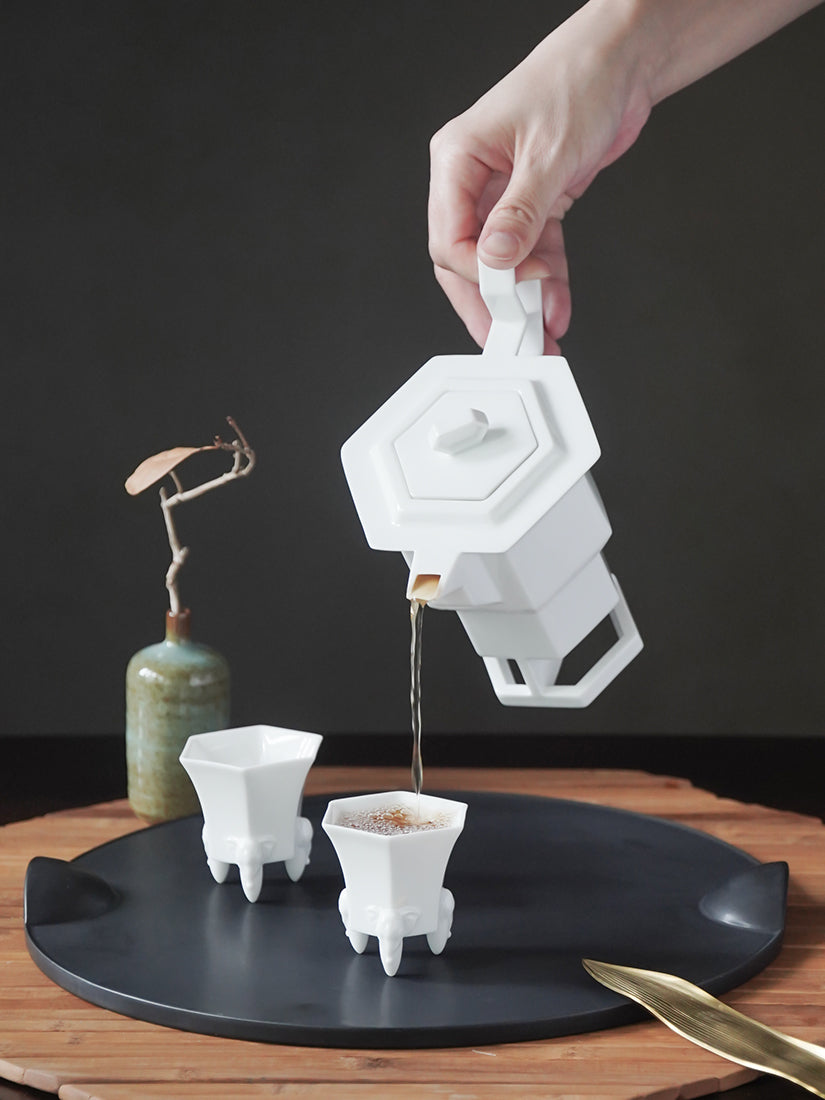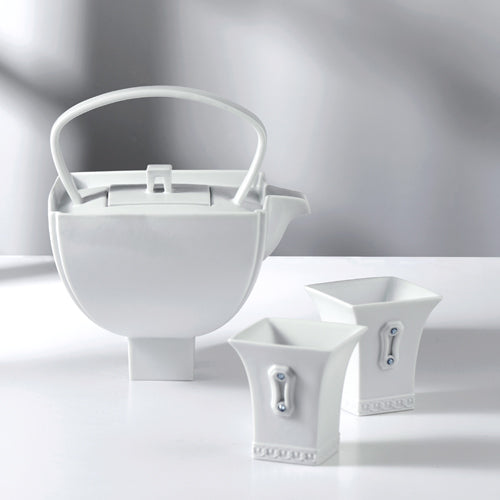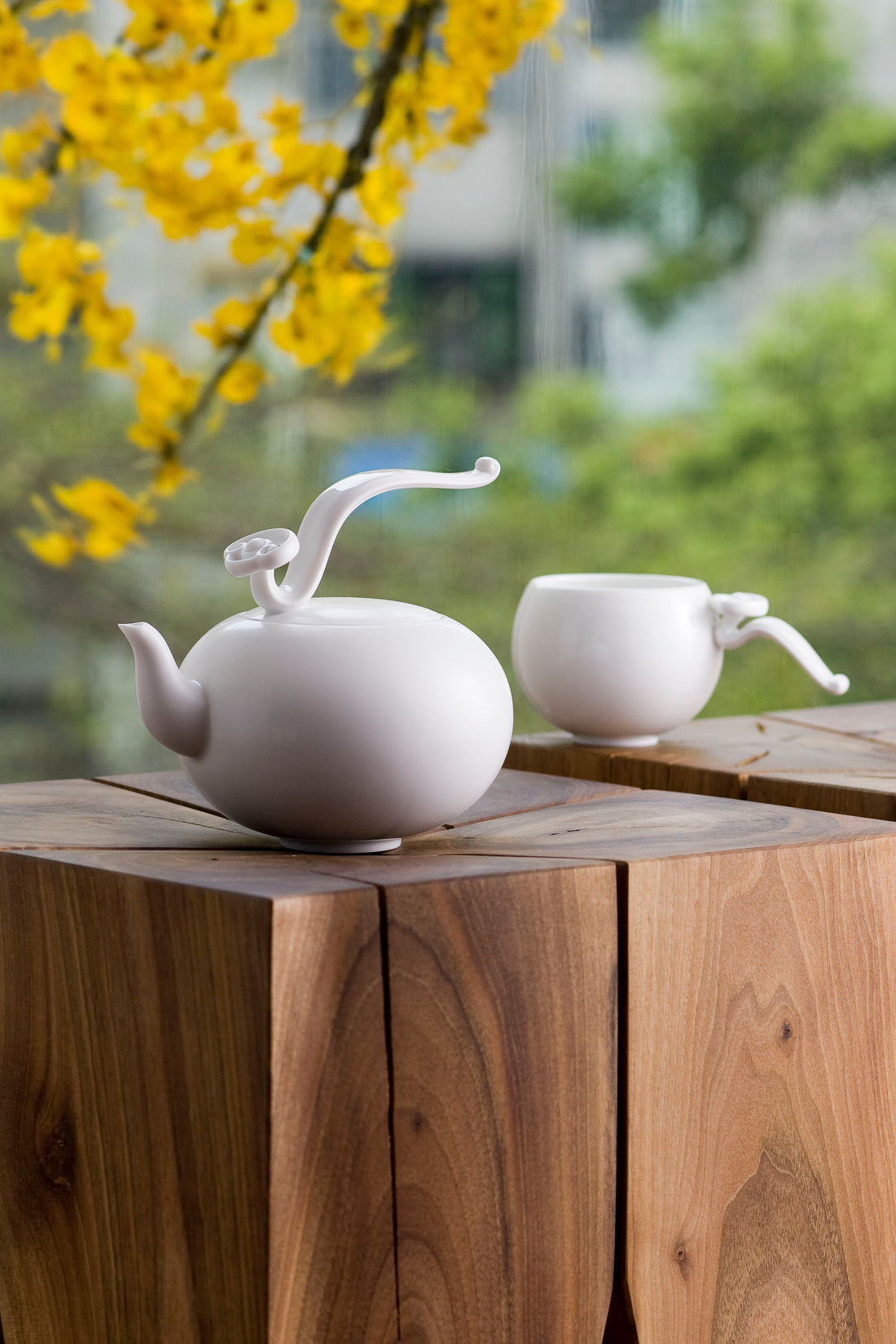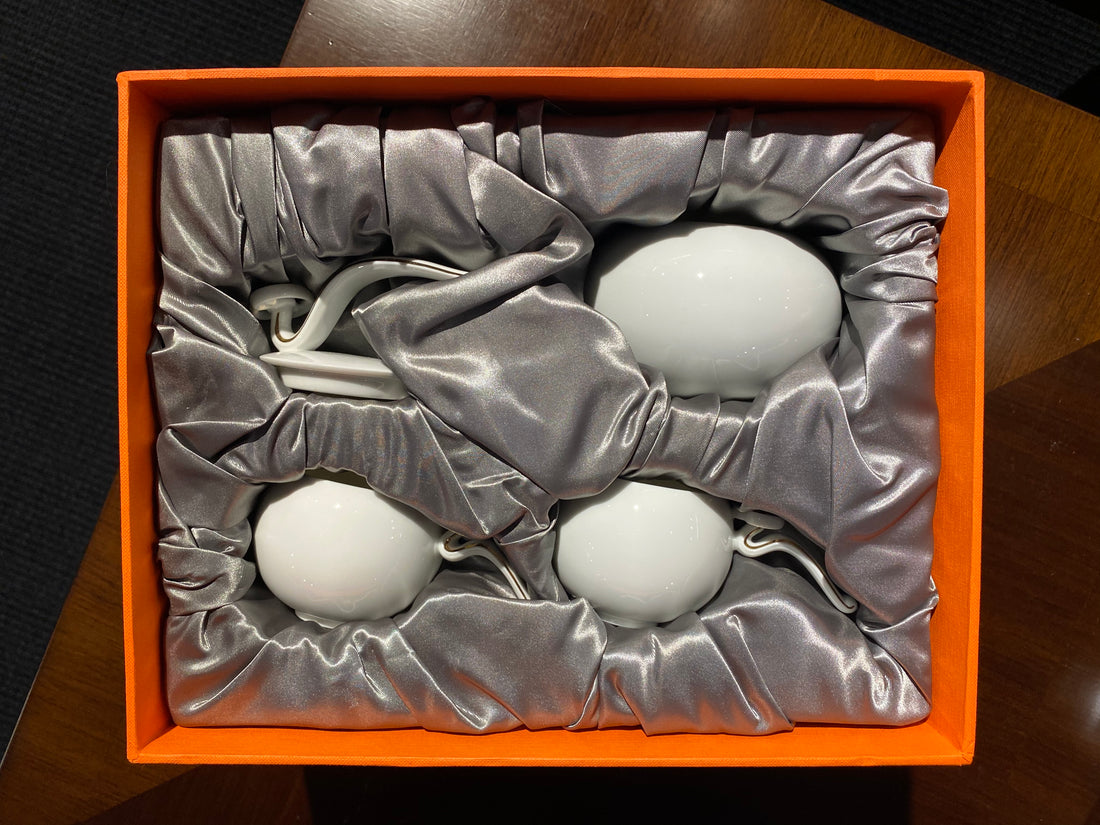Why Is NewChi Porcelain Always White?
From Colorful Glass to Serene White: A Personal Transformation
Heinrich Wang made a deliberate choice to leave behind the vibrant, luminous world of glass art and immerse himself in the serene, snow-white realm of porcelain. This was not simply a shift in material—it marked a deeper transformation in artistic vision and life philosophy. He moved from the layering of color to the silence of white, from visual stimulation to contemplative form.
A Technical and Aesthetic Challenge: Why Transparent Glaze and White Clay?
Nearly all of NewChi’s porcelain works adopt transparent glaze, which reveals the raw color of the fired porcelain clay. This is one of the most difficult choices an artist can make:
-
Transparent glaze conceals nothing: every curve, proportion, line, and even the subtlest textural imperfection becomes visible.
-
Stripped of ornament, the form itself must carry the aesthetic weight. Each angle must stand up to scrutiny; each detail must engage gracefully with space and light.
-
It is more than a technical preference—it’s a declaration: ceramic aesthetics must evolve with the times.
“No surface-level tricks. Real change must come from within.” — Heinrich Wang
White, But Not Just White: From ‘Ming Bai’ to ‘White Gold’
1. Ming Bai — A Unique Formula and Philosophy
After three years of experimentation, Heinrich Wang coined the term "Ming Bai" (literally "Clear White") to describe his signature porcelain hue. It’s not the warm tone of "Sweet White," nor the cold sterility of industrial "Cool White." Ming Bai is the white of a gentleman—dignified, honest, luminous, and balanced.
2. White as a Spiritual Mirror
To Wang, white represents:
-
Unadorned and unfiltered clarity
-
Freedom, humility, kindness, and openness
-
The cosmic void from which all possibilities emerge
3. White as Porcelain’s True Nature
Porcelain has long relied on color and pattern for its allure. Yet this often overshadows the language of the form itself. NewChi chooses to return to the raw, unglazed essence of porcelain, letting light, silhouette, and structure speak louder than ornament.
4. White Gold: Reviving a Glorious Legacy
In the 17th century, white porcelain from China mesmerized Europe—it was called White Gold, prized even above real gold. Wang seeks to revive that sense of cultural pride, not through nostalgia, but by crafting a new design language for a new era:
“Porcelain must dance with the spirit of our time, not linger in the elegance of the past.” — Heinrich Wang
White Porcelain and Zen Aesthetics: From Buddha to Everyday Objects
In Wang’s Buddhist sculptures, white symbolizes purity, emptiness, and transcendence. As he puts it: “White extends the boundless clarity of the sky.”
To him, white is a truthful aesthetic choice—it does not embellish. It simply allows the essence to speak for itself.
White and Modernity: A Rewritten Ceramic Narrative
Traditional porcelain often clings to historical imagery and decorative motifs. NewChi breaks that mold by choosing white as its foundation—a clean slate for a contemporary design vocabulary.
White is like a poem yet to be written—a space open to emotion, memory, and imagination. In Wang’s design language, porcelain is not a decorative relic, but a medium for aesthetic conversation in modern life.
White as Space: An Invitation for Inner Reflection
White is emptiness, silence, stillness. It is the beginning of all things.
Without the distraction of color or imagery, the observer becomes a participant—projecting their own emotions, memories, and state of mind onto the porcelain. In this way, each piece becomes a landscape for contemplation, and white becomes a timeless language of design.
“White is a choice. And a commitment. In its silence, all things emerge.” — Heinrich Wang
FAQs
Why is all NewChi porcelain white?
NewChi chooses transparent glaze to reveal the natural color of the porcelain clay. This reflects a commitment to authenticity in materials and a deeper engagement with modern design values. White is a more challenging, but also more honest, artistic choice.
Is white porcelain more premium than colored porcelain?
Not necessarily. However, white porcelain demands a higher level of craftsmanship—perfect proportions, refined lines, flawless surface quality. Transparent glaze exposes every detail, making it a powerful test of skill.
Who is white porcelain suitable for—as a gift or collection?
White porcelain is perfect for those who value tasteful simplicity, cultural depth, and mindful living. It makes a thoughtful gift or collectible for design lovers, minimalists, and seekers of Zen-inspired elegance.


